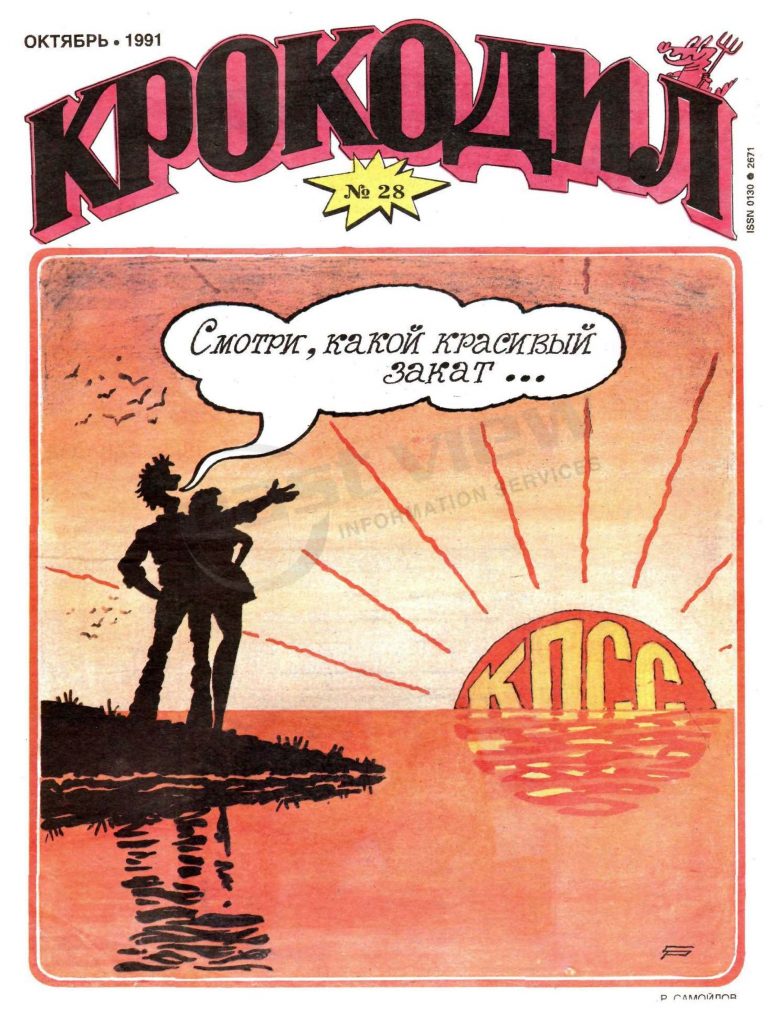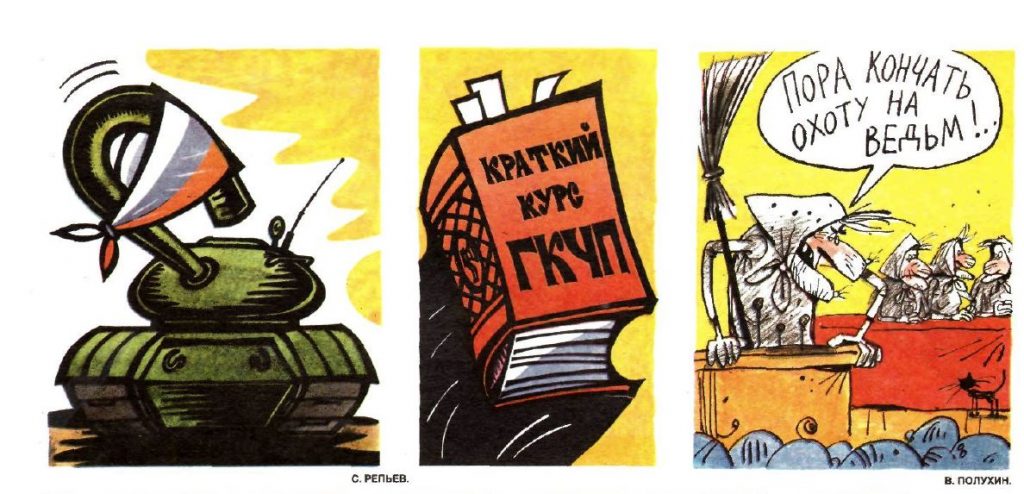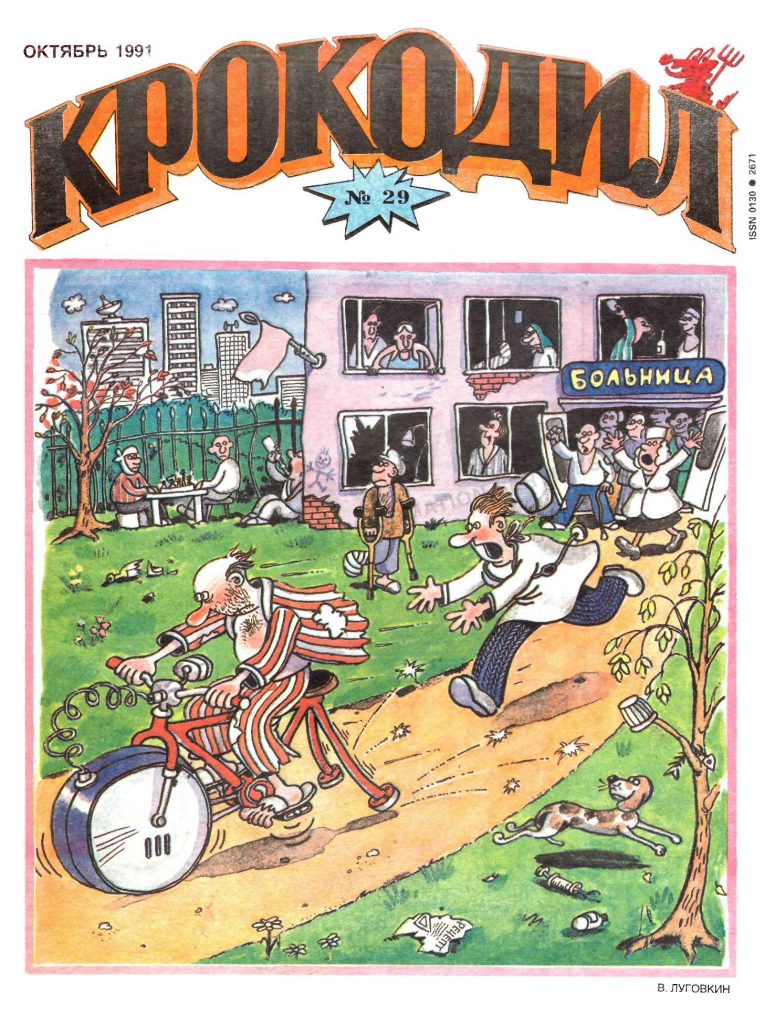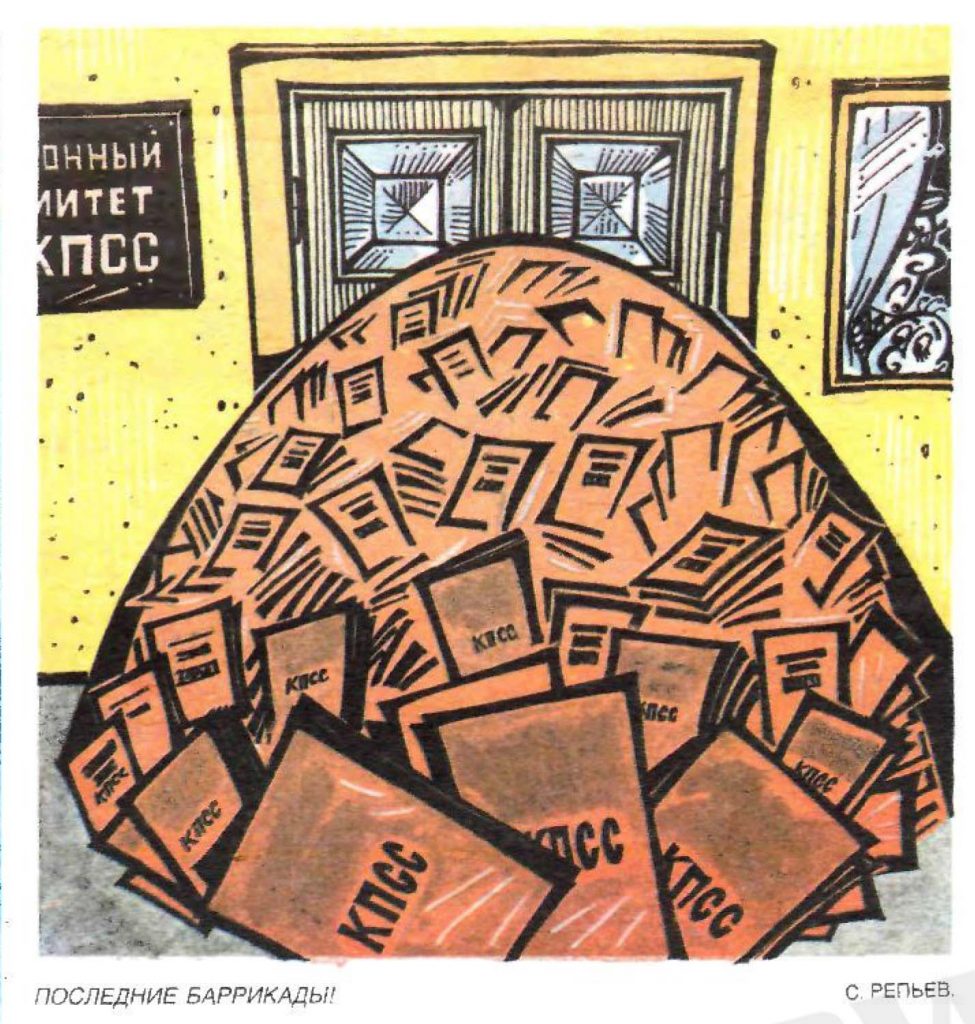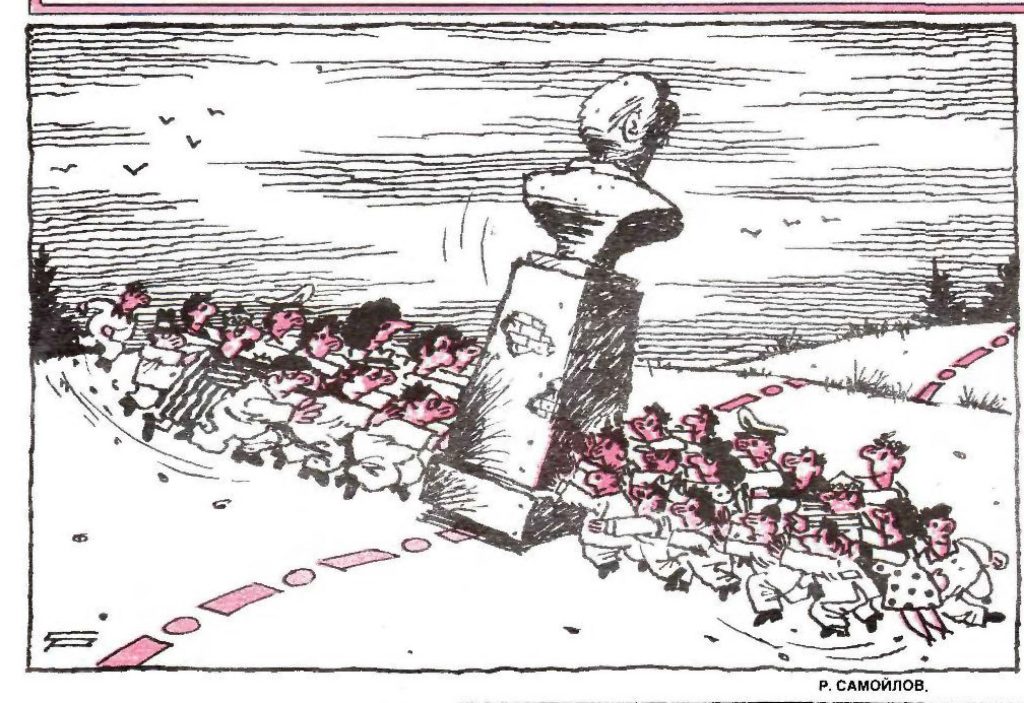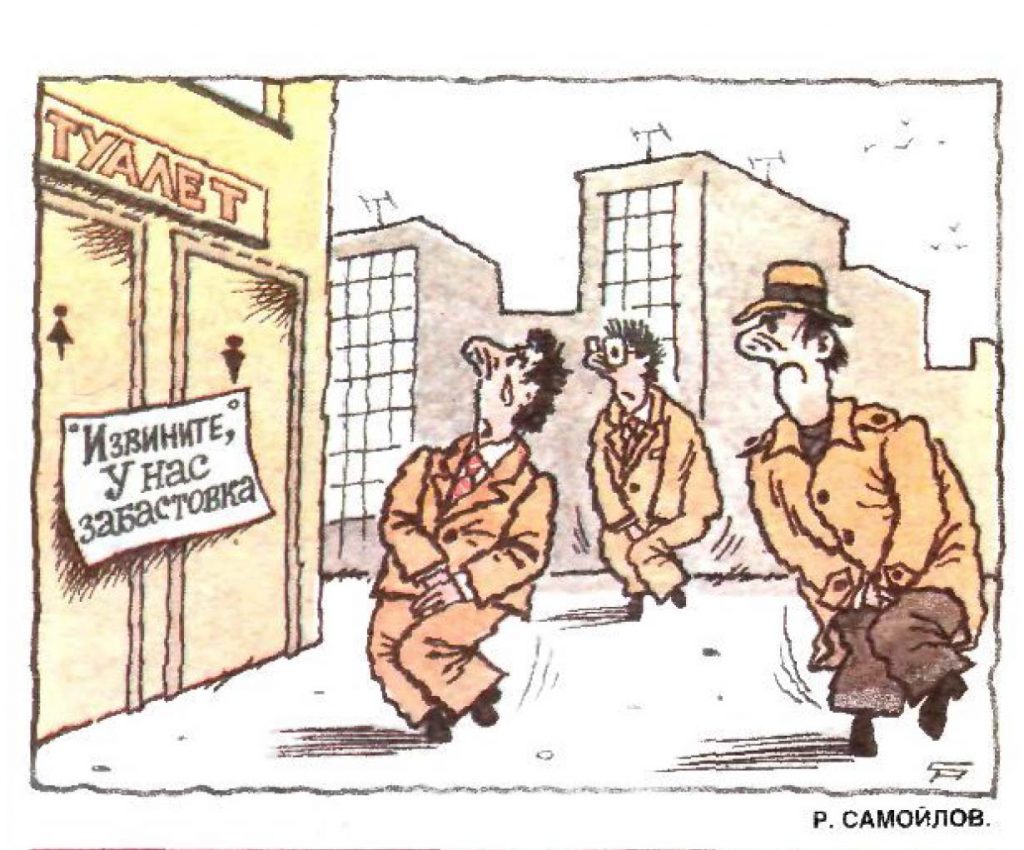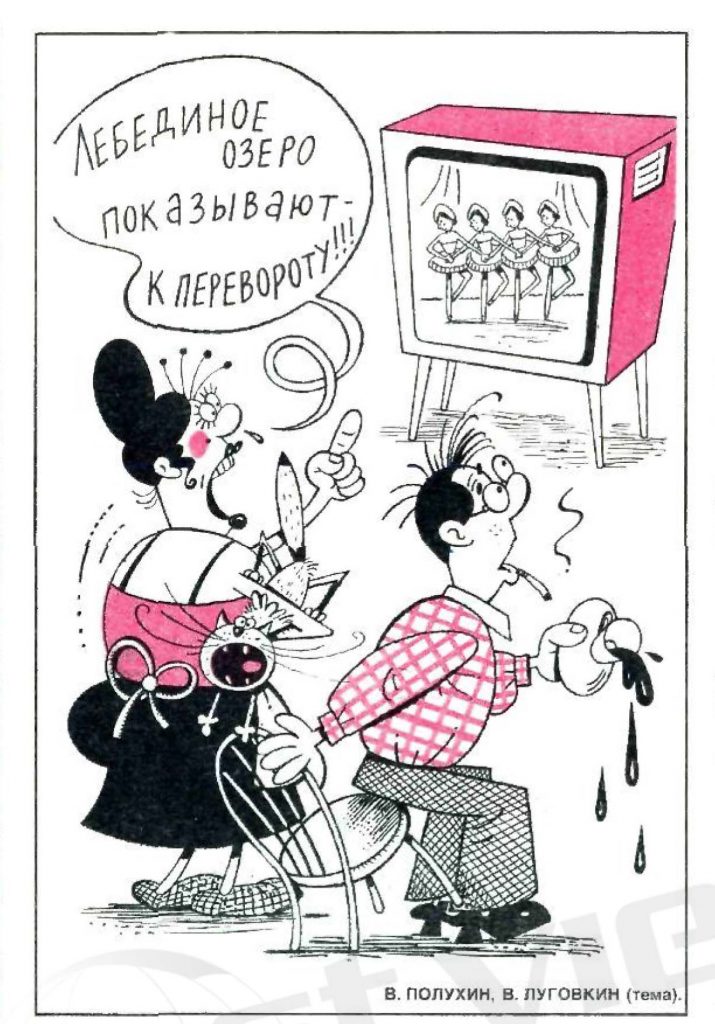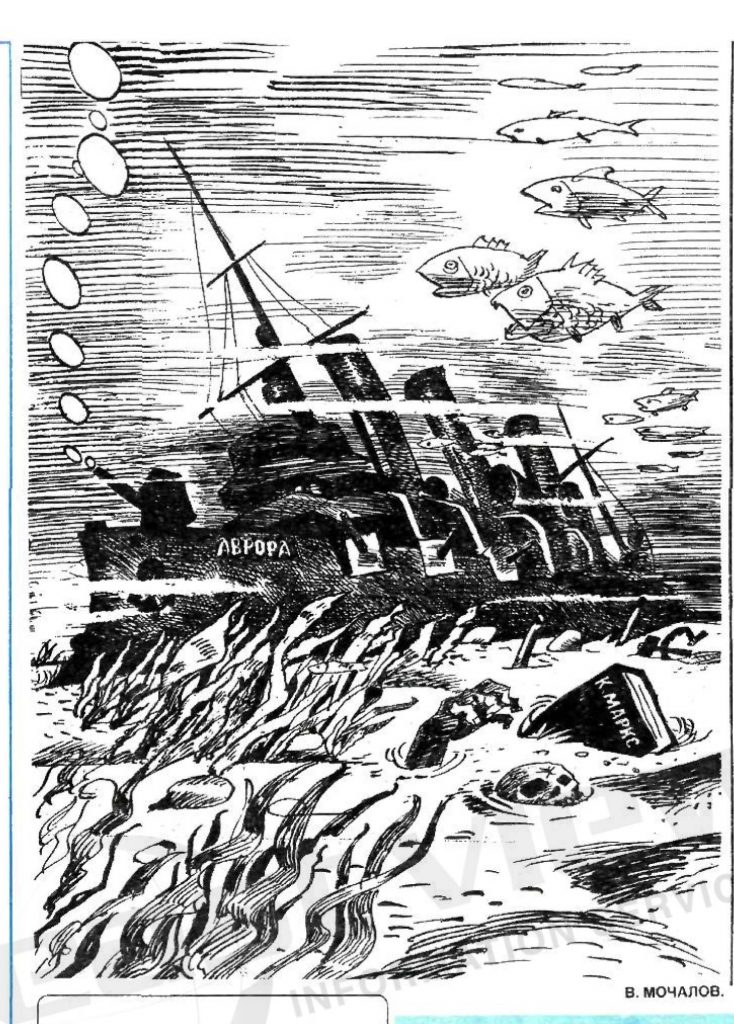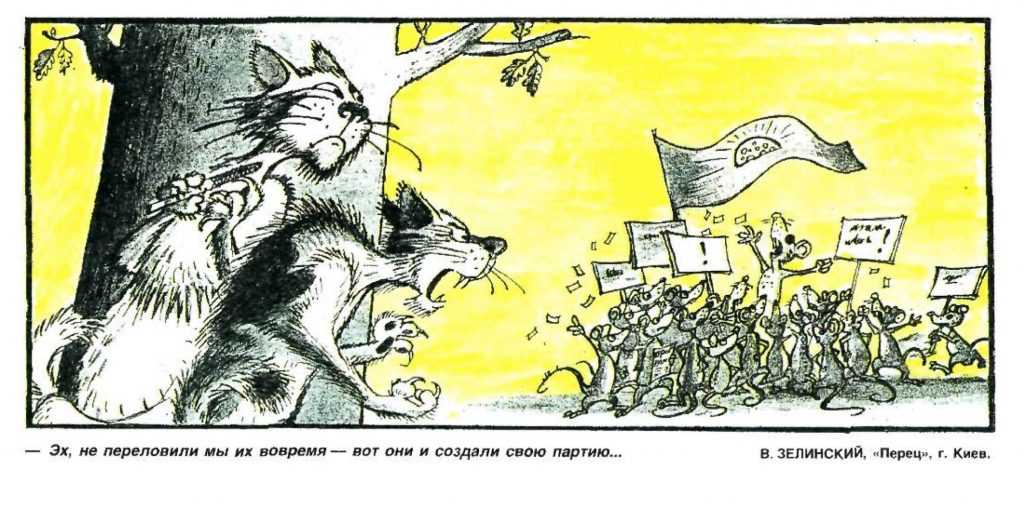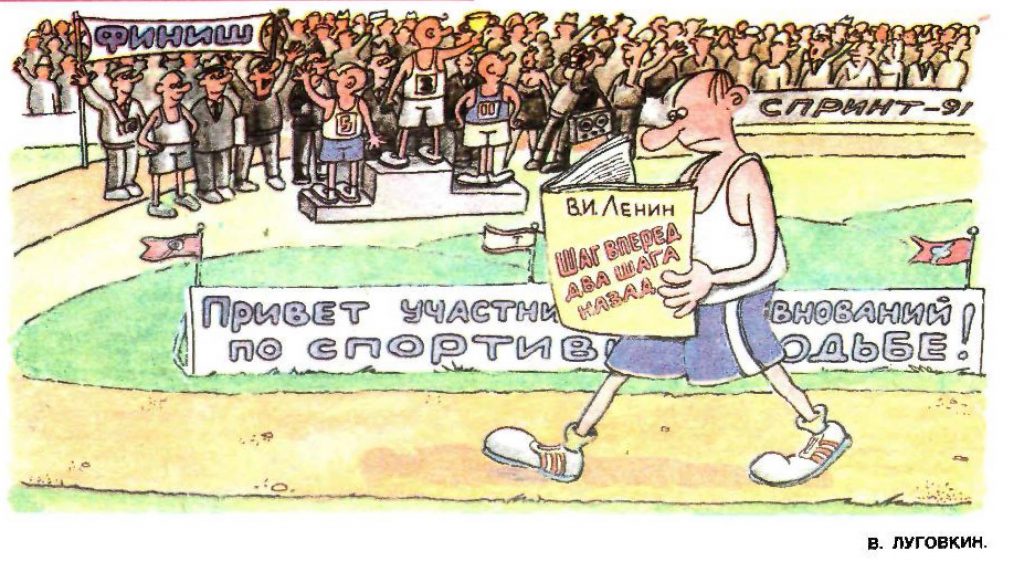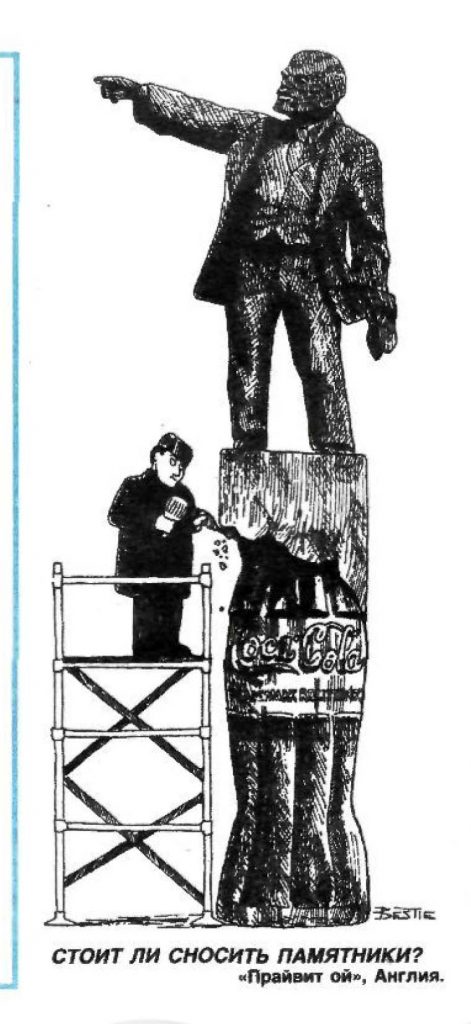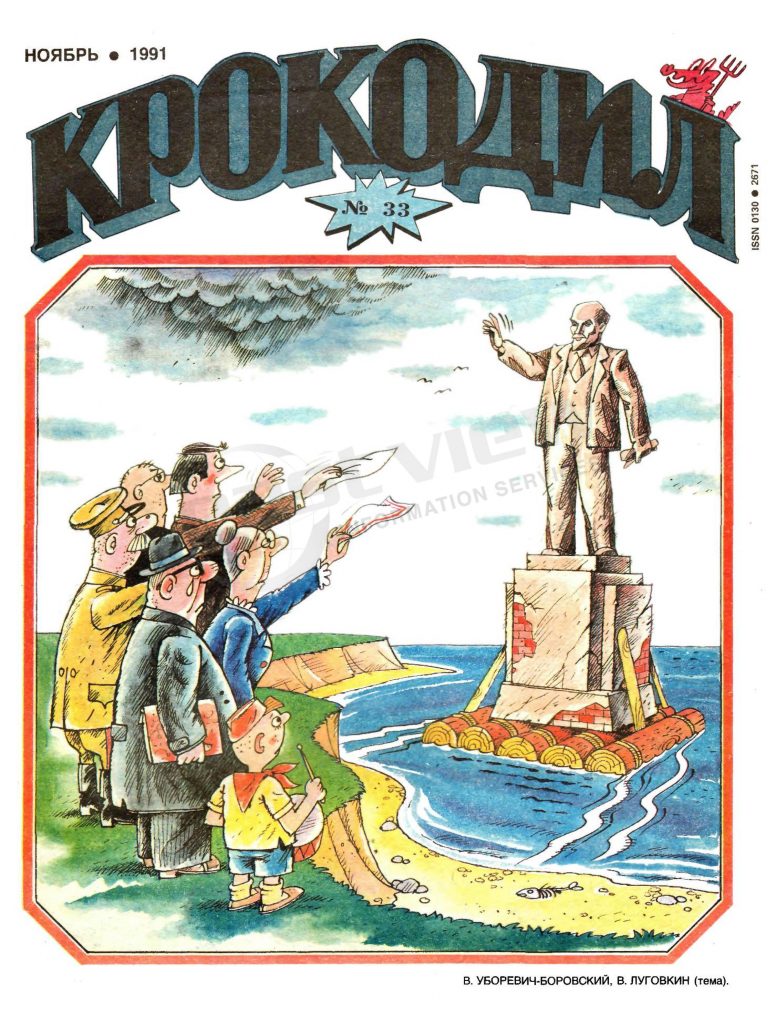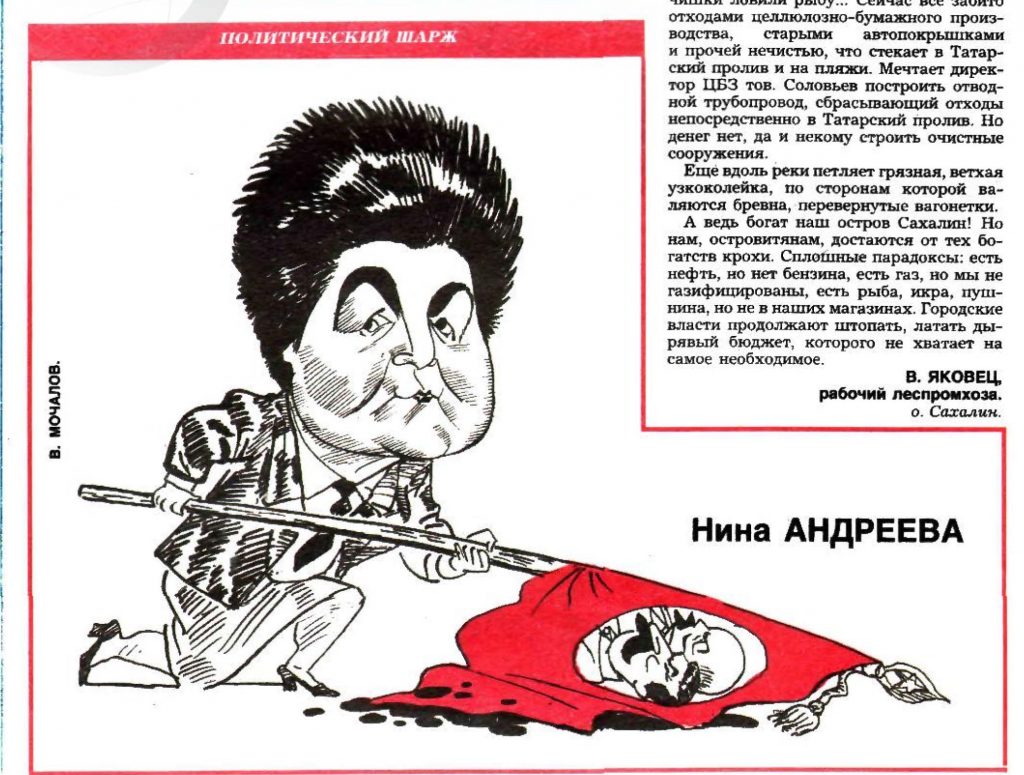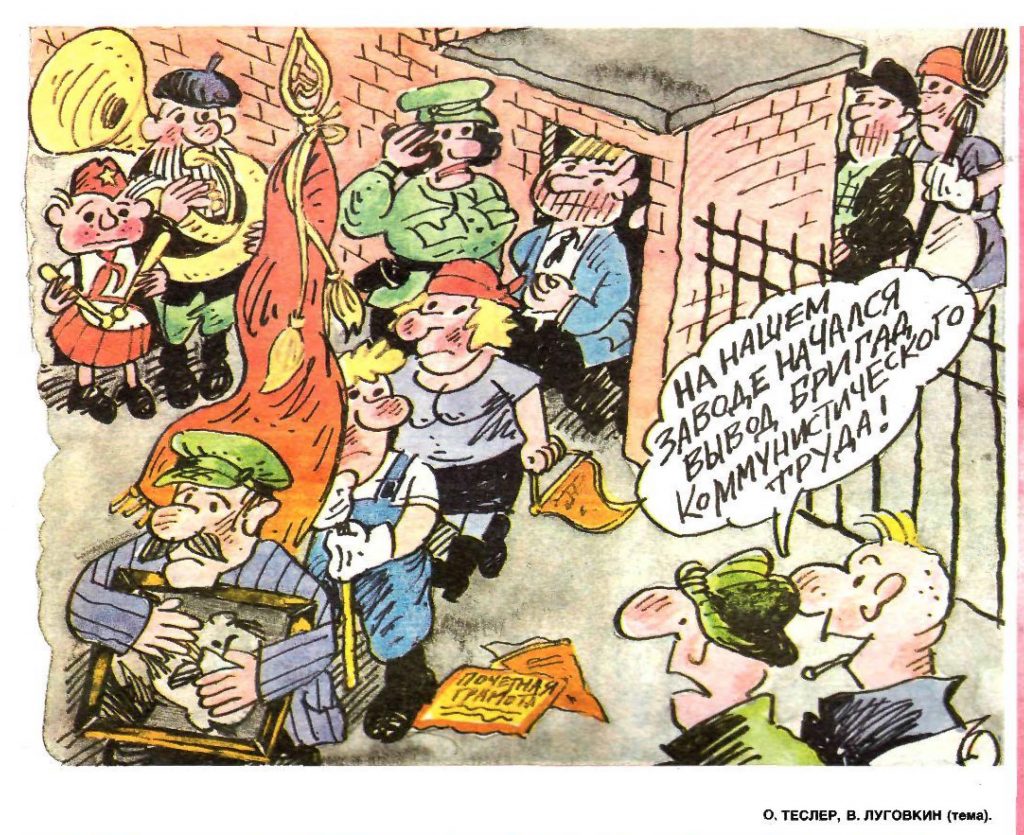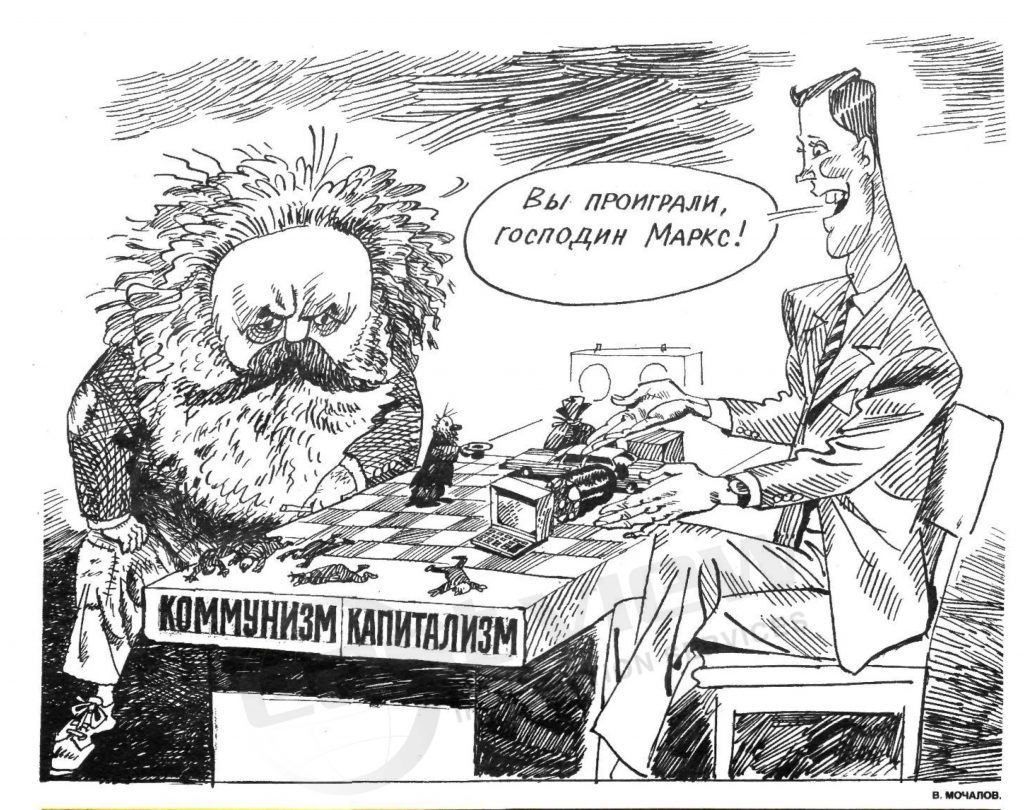This week’s post takes us into the way Krokodil (Crocodile), the popular satirical journal, covered the Soviet collapse. Featuring cartoons from October and November, this post allows us to “see” the unraveling of the Union a little more clearly.
The cover to Issue 28 (October) has a couple staring at the setting sun, which has KPSS (Communist Party of the Soviet Union) on it. “Look, what a beautiful sunset,” the man tells his companion.
A “photopoem” from the October issue features a monument in Alma-Ata (now Almaty), the capital of the Kazakh SSR. Ripped in half, the monument represents a historical turning point, as the short text notes.
Two cartoons from issue 28. On the left, a Soviet tank is rendered harmless by a Russian flag. On the right, the “Short Course of the GKChP” (the State Emergency Committee; the title refers to the Short Course of the Communist Party) is followed by a grandmother shouting “it’s time to end the witch hunt!”
The cover of Issue 29 from October has a patient fleeing from the hospital. Below, on page 2, a pile of Communist Party cards blocks the entrance to Party Headquarters. The text states: “The Last Barricade!” In the same issue, R. Samoilov’s caricature depicts the increasing polarization by October 1991: two sides struggle over a statue (the face is in the shadows, so it could be any statue), one trying to tear it down, the other trying to keep it up. The same artist had a second cartoon in the issue: even the toilets were on strike in late fall 1991.
Issue 30 featured cartoons with similar themes. In the first, a couple turns on TV to discover that “Swan Lake” is playing. “It’s a coup!” the wife screams (Soviet television played the ballet on August 19, alerting viewers that something was up). In the second caricature, a couple stands before a statue that has been torn down while noting that someone has obviously recognized his merits for the Fatherland.
November’s Issue 31 featured a cover image by V. Lugovkin. A neighbor in disguise wishes secret congratulations for the holiday honoring the October Revolution. The couple who answer their door (along with their cat) seem unsure that they want to accept the holiday wishes and accompanying card. On the next page, V. Mochalov’s cartoon sees the Battleship Aurora, a central part of the October Revolution and its myth, resting at the bottom of the ocean along with Marx’s works. A third caricature from the issue –reprinted from the Ukrainian satirical journal “Pepper”– has two cats lamenting that they did not catch the mice in time because they are now forming their own party. A cartoon from the Tatar journal “Scorpion” sees a wealthy hand drop a dollar bill into the cap of Monomakh, the traditional symbol of the Russian autocracy.
Issue 32, also from November 1991, featured a cartoon race where the only person yet to finish is slowed down because he is reading Lenin. A second caricature from the issue sees someone shooing birds away from the KGB building, while a third–republished from the British journal “Private Eye”–has a Lenin statue transformed into a more appropriate symbol for the new Russia.
The last Krokodil from November 1991 came with the cover image below: a group of Soviet citizens, mostly elderly, way goodbye to a Lenin statue cast adrift at sea (the first Soviet leader returns the wave). Inside, Nina Andreeva, who authored the 1988 anti-perestroika article “I Cannot Forsake My Principles,” struggles to maintain a grip on a flag with Lenin and Stalin on it. The third cartoon sees two workers watching as the communist labor brigade departs their factory. Finally, Karl Marx sits at a chessboard with his side marked “Communism.” On the other side–labeled “capitalism”–sits a man in a suit. “You lost, Mr. Marx,” he declares.

